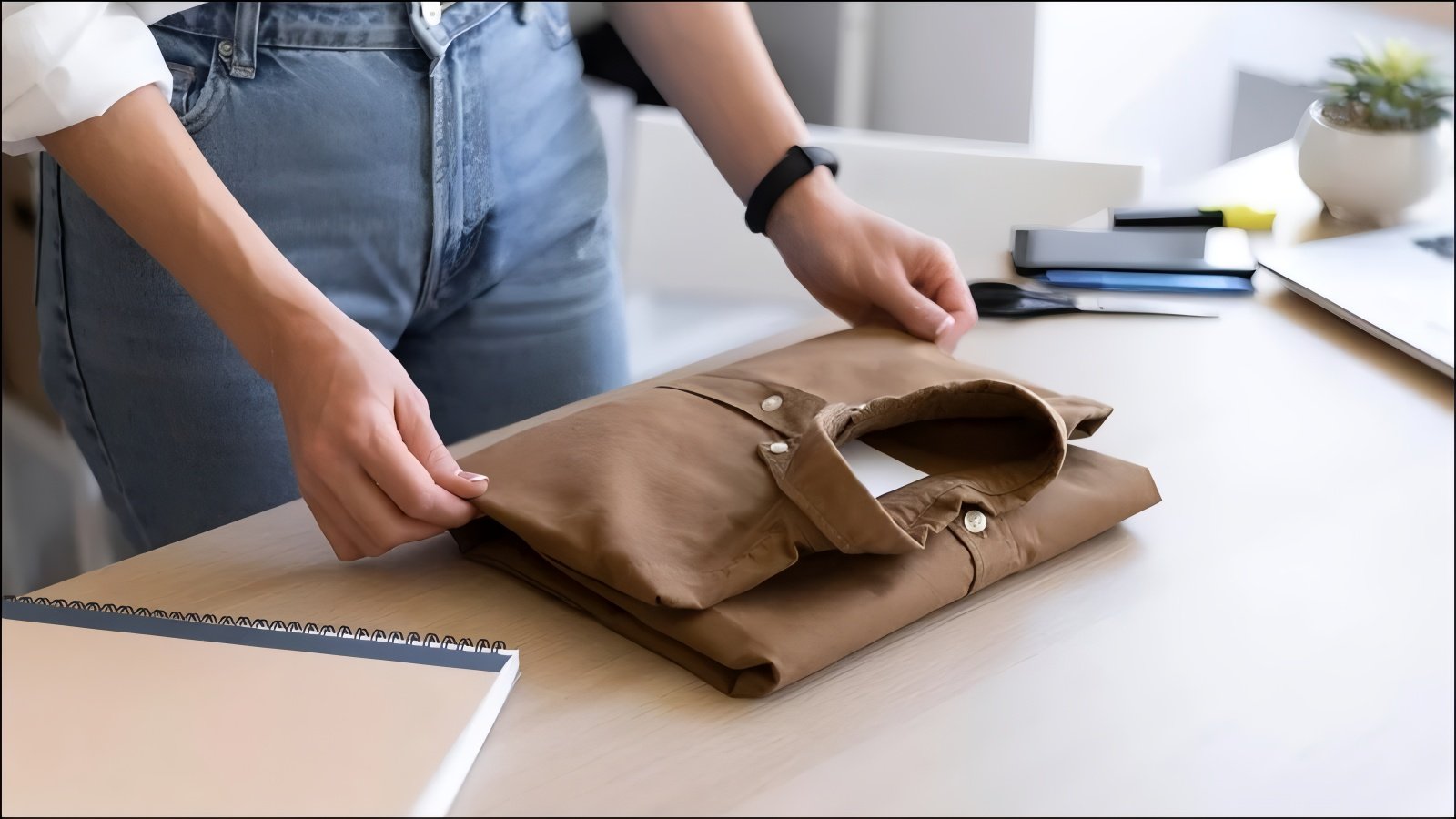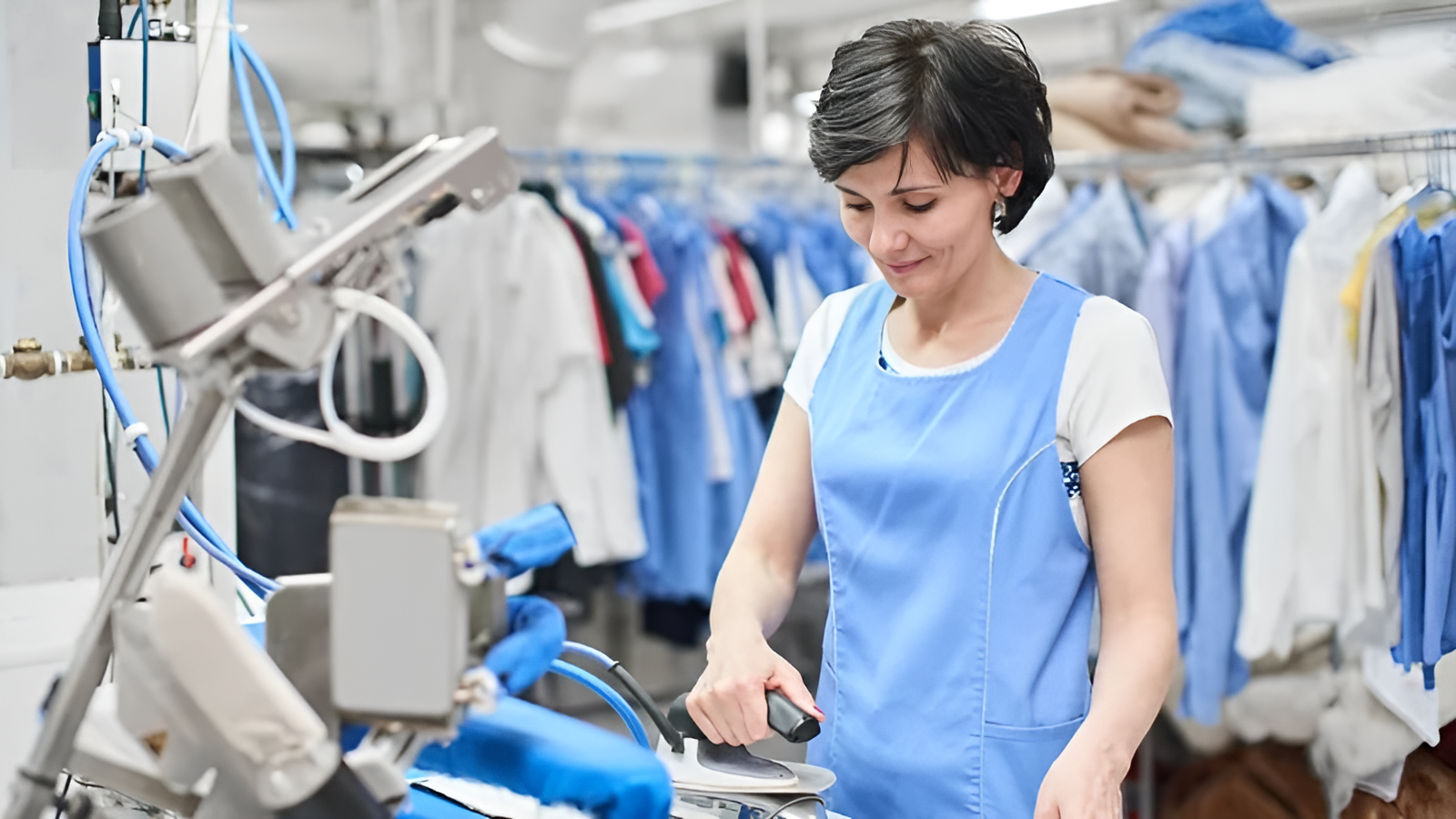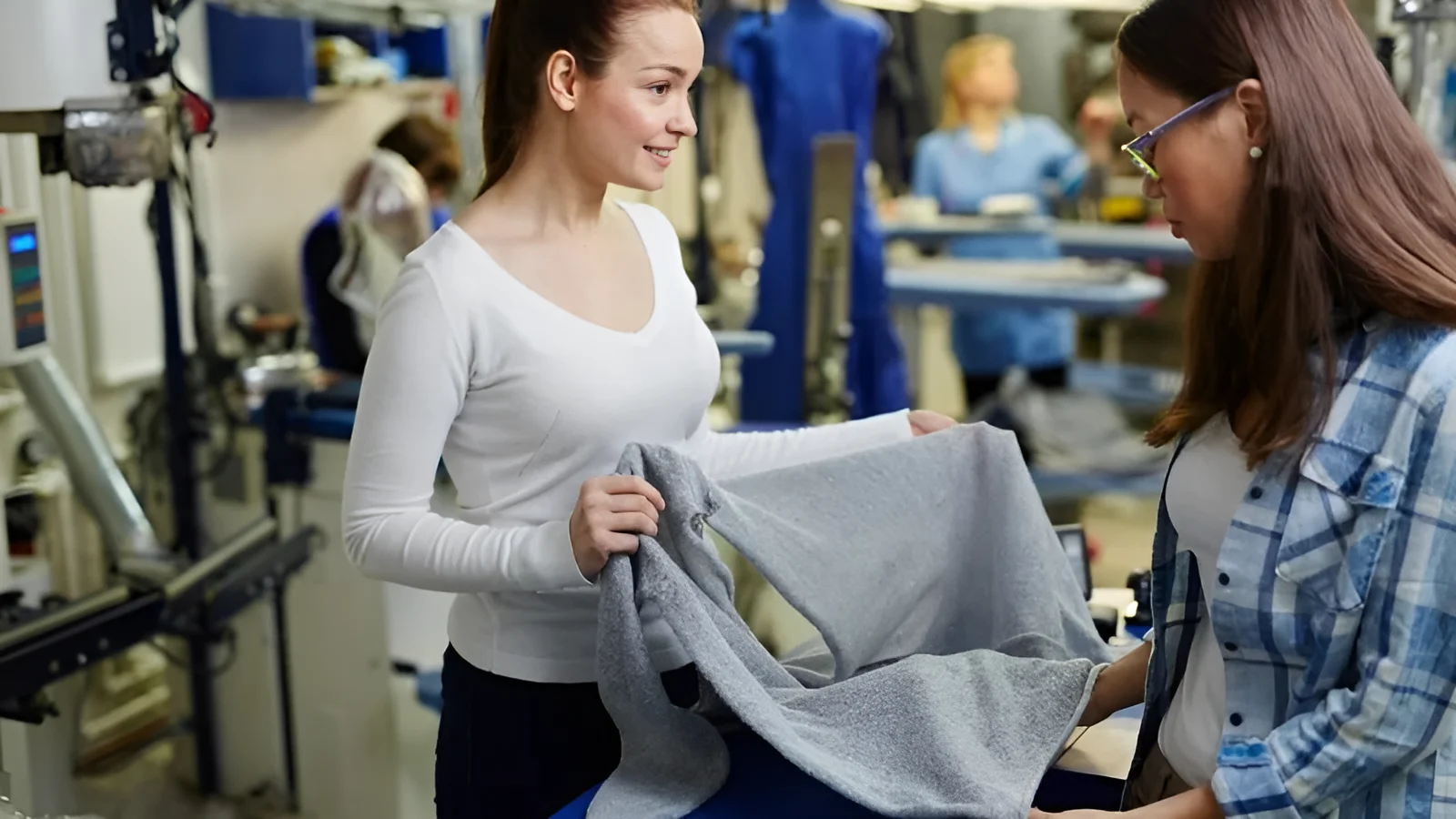Apparel Finishing: Key to Quality for Small Brands
When business owners hear the word “finish,” they often think of simply completing a task. In the world of clothing production, however, “finish” signifies much more. Apparel finishing encompasses a critical set of post-production processes applied after the basic fabric is woven or knitted, or even after a garment is sewn together. These treatments aren’t mere afterthoughts; they are deliberate steps taken to refine and enhance specific qualities of the clothing.
For small businesses venturing into the competitive clothing market, understanding these processes is not just beneficial – it’s vital. It allows for informed decisions about product development, helps in communicating requirements clearly to manufacturers, and ultimately contributes to creating apparel that meets customer expectations for look, feel, and longevity.
This knowledge empowers you to elevate your brand beyond the basics and build a reputation for quality. This article unpacks the essentials of apparel finishing, providing insights to help your business make smarter choices and achieve better results. Let’s start!
1. Why finishing is a game-changer for your clothing line
Apparel finishing offers a spectrum of benefits that are crucial for product success and shaping how customers perceive your brand. From the initial visual attraction to long-term wear, these processes play a fundamental role.

1.1 Crafting the look and appeal
Finishing techniques directly shape the visual aspect of a garment, influencing its overall appeal. One major impact is on color. Specific dyeing processes can achieve exceptional color vibrancy and depth, while various washes (like stone washing or acid washing) create sought-after faded, vintage, or distressed appearance effects on fabrics like denim.
Beyond color, finishes manipulate the surface texture and light reflection. Techniques like calendaring (passing fabric through heated rollers) can impart a smooth surface with noticeable sheen, whereas processes like crinkling introduce intentional texture.
For example, a specialized dyeing technique ensures t-shirts boast brilliant hues that resist fading, while a careful stone wash gives jeans that desirable lived-in appearance consumers often seek. Understanding these options allows businesses to deliberately craft the desired look for their clothing line.
1.2 Transforming texture
Handfeel, the tactile aspect of a fabric, profoundly influences a customer’s perception of comfort and quality. Apparel finishing offers numerous ways to modify this crucial characteristic. Processes like enzyme washing or bio-polishing break down tiny surface fibers, resulting in exceptional softness.
Conversely, applying certain resins can add stiffness and structure, improving the fabric’s drape or body. Calendaring contributes to smoothness, while brushing or napping techniques raise surface fibers to create warmth and a fuzzy texture, characteristic of flannel shirts or cozy sweatshirts.
Consider how an enzyme wash transforms a standard cotton t-shirt into something remarkably soft, enhancing its perceived value. Similarly, the brushed finish on flannel is essential for its characteristic warmth and tactile appeal. The right handfeel can make a garment feel more luxurious and comfortable, directly impacting customer satisfaction.
1.3 Boosting performance & garment lifespan
Beyond look and feel, functional finishes impart specific performance benefits, enhancing wearability and durability. These treatments address common consumer needs and can significantly extend a garment’s usable lifespan. Common examples include:
- Wrinkle resistance: Achieved through resin treatments, particularly on cotton and blends, reducing the need for ironing and maintaining a neater appearance during wear.
- Water repellency/resistance: Coatings or chemical treatments applied, primarily to outerwear, cause water to bead up and roll off the surface.
- Shrinkage control: Mechanical processes like compacting or chemical treatments help pre-shrink fabrics, ensuring better fit retention after washing.
- Anti-pilling: Treatments, often applied to synthetic fibers and blends, reduce the formation of small fiber balls (pills) on the fabric surface caused by abrasion.
Other specialized functional finishes exist, such as UV protection, flame retardancy, or antimicrobial properties, though these often cater to specific niches and may increase costs. Importantly, functional finishes often necessitate specific care procedures, which must be clearly communicated through apparel care instructions (care labels) to maintain the finish’s effectiveness and the garment’s overall durability.
| Functional Finish | Primary Benefit |
|---|---|
| Wrinkle Resistance | Reduces creasing, easier care |
| Water Repellency | Resists water penetration |
| Shrinkage Control | Minimizes shrinking during laundering |
| Anti-Pilling | Prevents surface fuzzballs |
| Soil Release | Makes stain removal easier |
| UV Protection | Blocks harmful ultraviolet rays |
| Antimicrobial | Inhibits odor-causing bacteria growth |
1.4 Enhancing perceived value and building trust
The quality of a garment’s finish significantly impacts its perceived value. Consumers often intuitively link a pleasant handfeel, rich coloration, and neat appearance to higher overall quality, justifying a higher price point.
Achieving consistency in finishing across all units of a particular style, and from one production batch to the next, is paramount. Inconsistent finishes – variations in color, softness, or performance – can signal poor quality control to customers and damage your brand reputation.
A superior or unique finish can serve as a powerful differentiator in a crowded marketplace, contributing positively to customer perception and fostering trust in your brand’s commitment to quality.

2. Exploring key types of apparel finishing processes
Apparel finishes can be broadly categorized based on the methods employed – primarily chemical or mechanical means, and whether they are applied to the fabric before or after garment construction.
2.1 Chemical finishing
Chemical finishing relies on textile treatment chemicals, known as finishing agents, typically applied through wet processing (using water or other solvents as a medium). These chemicals react with the fabric’s fibers to alter their properties.
Many common finishes fall into this category: dyeing uses chemical dyes to impart color, while softeners are applied to improve handfeel. Resins are used to achieve effects like wrinkle resistance.
Other examples include chemicals providing water repellency, improving color fastness (resistance to fading or bleeding), and agents that inhibit pilling. While highly effective, these processes often require significant amounts of water and energy, leading to growing interest in more sustainable chemical finishing alternatives.
2.2 Mechanical finishing
In contrast, mechanical finishing utilizes physical forces, temperature, pressure, or abrasion via specialized finishing machinery to modify a fabric’s texture or appearance. These methods often involve dry processing, although some might use moisture or steam.
Common examples include brushing, napping, or sueding, where wire brushes or abrasive rollers raise surface fibers to create softness and texture (like in flannel or fleece). Calendaring involves passing fabric between heated rollers under pressure to increase smoothness and luster.
Compacting uses controlled compression, often with steam, to reduce potential shrinkage. Heat setting is crucial for synthetic fabrics like polyester, using high temperatures to stabilize the fibers, preventing shrinkage and maintaining shape. Embossing uses engraved rollers to create raised patterns on the fabric surface.
2.3 Fabric finishing vs. garment finishing
The timing of the finishing process is another key distinction:
- Fabric finishing: These treatments are applied to large rolls or batches of fabric before the material is cut and sewn into garments. This approach is generally more efficient for large production volumes and typically results in high consistency across the entire fabric lot. Common fabric finishes include basic dyeing, printing, applying widespread functional treatments like water repellency, or initial shrinkage control.
- Garment finishing: These processes occur after the garment has been constructed (a post-sewing treatment). Examples include garment washing (using water, detergents, softeners, or abrasive materials like pumice stones for effects like softening, pre-shrinking, or creating washed-down looks) and garment dyeing (dyeing fully assembled garments). Garment finishing allows for effects specific to seams, edges, and the garment’s structure. It also offers greater flexibility for smaller batches and quicker responses to color trends. However, achieving perfect consistency between individual garments or batches can sometimes be more challenging than with fabric finishing.
3. Selecting the right finish for your products
Choosing the appropriate finish isn’t arbitrary. It requires careful consideration of the fabric, the product’s purpose, desired aesthetics, cost implications, and increasingly, sustainability factors.
3.1 Aligning with fabric type and intended use
Not every finish is suitable for every fabric type. The inherent properties of different fibers (natural/synthetic) – such as cotton, wool, polyester, silk, rayon – dictate how they will react to chemical and mechanical treatments.
For instance, heat setting is essential for stabilizing polyester fabrics and preventing unwanted shrinkage or shape distortion, but this process has no effect on natural fibers like cotton.
Similarly, certain dyeing methods work best on specific fiber types. Equally important is matching the finish to the garment’s intended use and required performance. A durable water-repellent finish is logical for outerwear but unnecessary for undergarments.
3.2 Defining your desired aesthetic and handfeel
Having a clear vision for the final product’s aesthetic (the visual aspect) and handfeel (the tactile aspect) is crucial before selecting finishes. Consider your brand identity and target customer profile.
Are you aiming for a look and feel that is rugged and durable, soft and luxurious, crisp and professional, or relaxed and casual? Defining these sensory goals – the specific color effect, the level of softness or structure, the presence of sheen or texture – provides clear direction when discussing options with suppliers or finishing facilities.
This ensures the chosen treatments align with the overall product concept and brand message.
3.3 Considering durability, care, and lifespan
The chosen finish directly impacts the garment’s long-term durability, not just of the fabric itself, but of the finish’s effect over time through wear and laundering. Some finishes are inherently more robust than others.
Furthermore, finishing treatments often dictate the necessary care procedures. A finish requiring specialized care, such as ‘dry clean only’ or ‘wash cold, lay flat to dry’, must be clearly indicated on the apparel care instructions. It’s important that these care requirements align with what customers typically expect for that type of garment.
Failing to consider care implications can lead to customer dissatisfaction if the finish degrades prematurely due to improper laundering, ultimately affecting the perceived garment lifespan and value.

3.4 Balancing cost and perceived value
It’s essential to acknowledge the cost factor associated with finishing. These processes add to production costs through the expense of chemicals, specialized machinery operation, energy and water consumption, and labor.
Generally, more complex finishes, multi-step processes, or high-performance functional treatments carry a higher cost aspect than basic finishes like simple softening or standard dyeing. Businesses must carefully weigh this added expense against the potential increase in perceived value by the customer and the price point the target market can realistically support.
3.5 Sustainability in finishing
The sustainability aspect of textile finishing is gaining significant attention. Traditional methods can be resource-intensive, consuming large amounts of water and energy, and sometimes utilizing chemicals that pose environmental or health concerns.
Both consumer awareness and regulatory pressures are driving the industry towards more sustainable finishing practices. Concepts gaining traction include technologies that drastically reduce water usage (like advanced low-liquor ratio dyeing machines or ozone finishing for denim), the adoption of safer chemistry (e.g., replacing perfluorinated compounds (PFCs) in water-repellent finishes), exploration of bio-based softeners and dyes, and greater reliance on certifications (such as bluesign® or OEKO-TEX® Standard 100) that verify safer inputs and more eco-friendly processes. Considering sustainable options is becoming increasingly relevant for brand image and meeting market demands.
4. How finishing choices shape your small apparel business?
Ultimately, the decisions made regarding apparel finishing have a direct and significant impact on core business outcomes. There’s a strong correlation between effective finishing and customer satisfaction; well-executed finishes contribute to positive experiences, while poor or inconsistent finishes can lead to complaints, returns, and damage to your brand reputation.
Leveraging unique or high-quality finishes can create unique characteristics for your products, serving as a compelling unique selling proposition (USP) and strengthening your brand identity.
Achieving the desired results consistently hinges on clear, detailed communication with your manufacturing partners. Providing precise specifications, often within technical packages (“tech packs”), is crucial for effective quality control and ensuring the final product matches your vision every time. Assumptions about finishes can lead to costly errors.
5. Related Questions (FAQs)
5.1 How much does apparel finishing add to the cost?
The cost factor varies significantly based on the type and complexity of the finish, the volume of fabric or garments being processed, the specific chemicals or machinery required, and the standards of the finishing facility. Complex multi-step or high-performance finishes generally cost more than basic ones.
5.2 How long do apparel finishes last?
The durability depends heavily on the type of finish and the quality of its application. Functional finishes like good quality wrinkle resistance or shrinkage control are generally designed to last for a reasonable garment lifespan with proper care.
Some aesthetic finishes, particularly certain washes or surface treatments, might evolve or slightly fade over time, which can sometimes be part of the intended design.
5.3 Are there many eco-friendly finishing options available?
Yes, the availability of sustainable finishing options is growing rapidly. This includes processes using less water and energy, employing safer (eco-friendly) chemistry (like PFC-free water repellents or natural dyes), using bio-based alternatives, and processes certified by organizations like bluesign® or OEKO-TEX®. Discussing these options with suppliers is increasingly worthwhile.
5.4 How can I ensure consistent finishing results for my products?
Achieving consistency requires clear quality control measures. Start with detailed specifications (tech packs) outlining the exact finish type, desired outcome (with visual or physical standards if possible), and performance requirements. Work with reliable manufacturing and finishing partners who have robust QC procedures. Implement checks against approved standards before shipment.
Read more:
Apparel finishing is far more than just the end of the production line; it represents a crucial stage of garment processing and fabric enhancement. These processes are fundamental tools for quality improvement, transforming basic materials into appealing, comfortable, and functional clothing.
For small businesses, understanding the nuances of finishing empowers owners to make strategic decisions, communicate effectively with suppliers, enhance product quality, and ultimately build a stronger brand. Applying this knowledge during product development and sourcing allows for greater control over the final outcome.
Consider how the right finish not only impacts the garment itself but also complements other details, like ensuring the quality and style of labels and tags align with the overall perceived value you aim to deliver. Making informed choices about these final steps is essential for creating apparel that truly stands out.






















